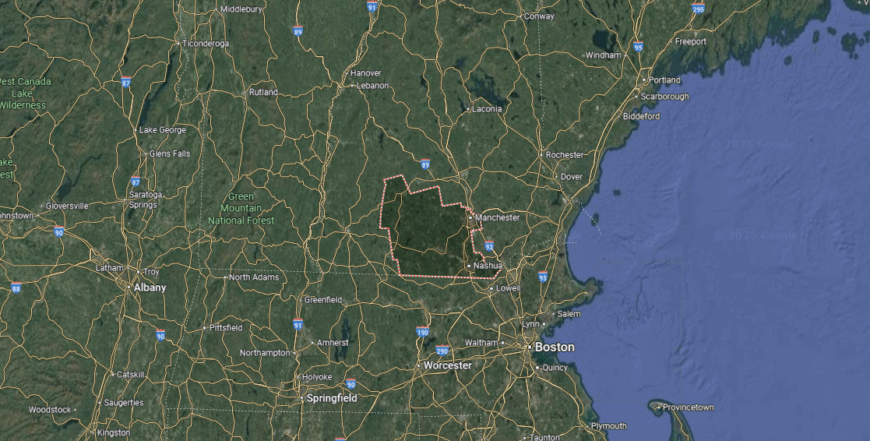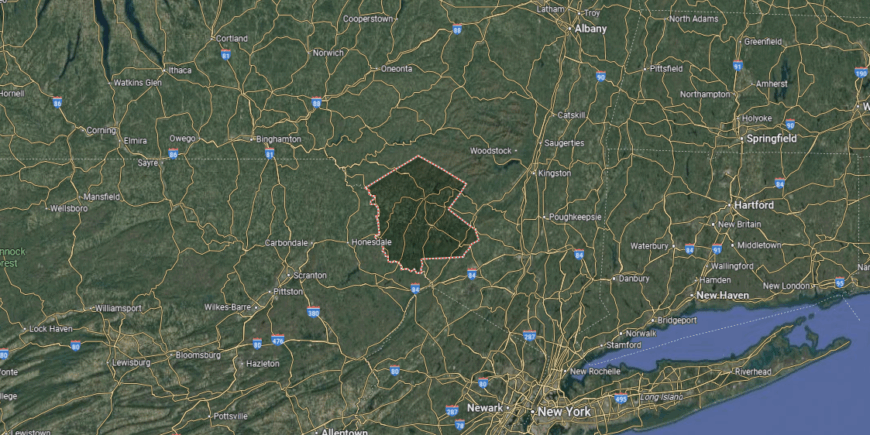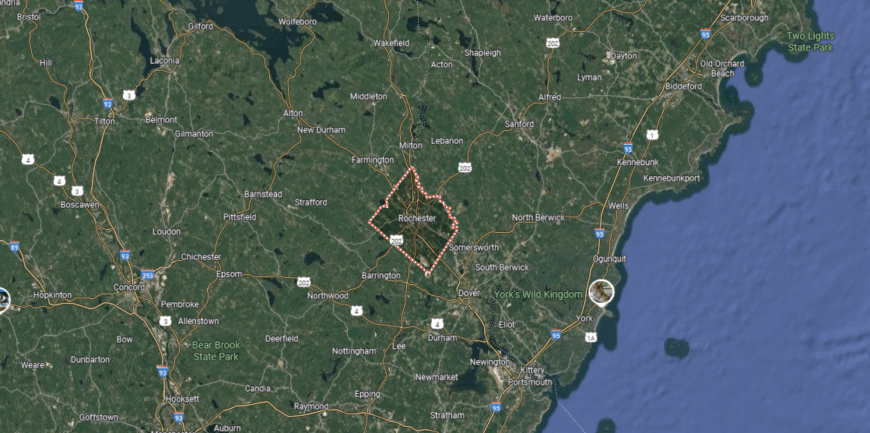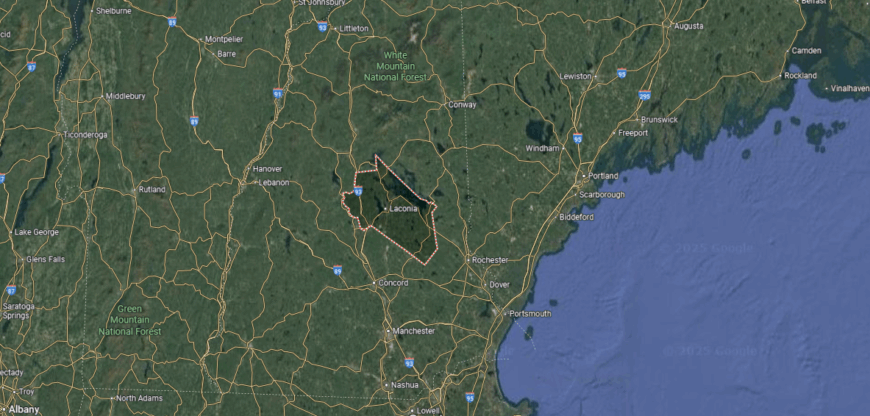
Counties with the shortest life expectancy in New Hampshire
Life expectancy can be affected by a variety of factors. About 25% of your lifespan is determined by genetics, according to the National Library of Medicine. Health and wellness habits—like following a balanced, nutrient-rich diet; not smoking; drinking minimal alcohol; maintaining a healthy weight; and staying physically active—can add more than a decade to your life, research from the National Institutes of Health shows. While these factors are significant, another important element that you might not have considered is your environment and community.
While life expectancy generally increases annually in the United States—jumping from about 70.8 years old to 77.5 between 1970 and 2022, according to the Centers for Disease Control and Prevention—this particular metric can vary from state to state or even county to county. In some parts of the country, the average lifespan is getting shorter based on a variety of risk factors on top of health, including socioeconomic factors like poverty, unemployment, income, and education.
According to a 2020 study from researchers at Penn State, West Virginia, and Michigan State Universities, communities with a higher population density, more fast food restaurants, and a high number of extraction industry-based jobs tend to have shorter life expectancies.
To find out how life expectancy varies within New Hampshire, Stacker used 2024 County Health Rankings & Roadmaps from the University of Wisconsin Population Health Institute to identify the counties with the shortest life expectancy. Life expectancy measures the average number of years from birth a person can expect to live and is calculated based on the number of deaths in a given time period and the average number of people at risk of dying during that period. Counties with unreliable or insufficient data were excluded from the analysis. Mortality data came from the National Vital Statistics System.
Read on to see if your county is on the list.
You may also like: Best colleges in New Hampshire

#5. Hillsborough County
– Life expectancy: 78.9 years
— 0.3 years lower than the state average

About
Hillsborough County, Florida is a dynamic Gulf Coast region where history, commerce, and cultural diversity shape its identity. The city of Tampa, the county seat, anchors the area with its role as a major port, business hub, and center for arts and sports. Surrounding towns and communities reflect a mix of historic districts, suburban growth, and coastal influence.
Residents take part in festivals, parades, and community gatherings that highlight the county’s rich blend of cultures. Outdoor life thrives along Tampa Bay, in regional parks, and on the Gulf waters that connect people to the natural environment. Hillsborough County remains a place where heritage, innovation, and community spirit come together in lasting form.
Where is Hillsborough County?

Hillsborough County is in southern New Hampshire, bordering Massachusetts to the south and Merrimack County to the north. It spans about 900 square miles, with river valleys, rolling hills, and the state’s highest population.
Manchester and Nashua, the two largest cities in New Hampshire, anchor the county. The county seat is shared between them, reflecting its dual centers of government and commerce. Blending cities, mill towns, and rural areas, Hillsborough County is the state’s economic hub.
#4. Sullivan County
– Life expectancy: 78.4 years
— 0.8 years lower than the state average

About
Sullivan County, New Hampshire rests in the Connecticut River Valley, where small towns and wooded hills create a landscape tied to both history and nature. The city of Claremont, the county seat, reflects an industrial past rooted in mills along the Sugar River while today serving as a hub of commerce and community life. Across the county, villages and rural areas preserve traditions of farming, forestry, and small-scale craftsmanship.
Residents gather for fairs, festivals, and school events that highlight both heritage and local pride. Outdoor recreation thrives in the county’s forests, rivers, and mountains, offering opportunities for hiking, fishing, and seasonal activities. Sullivan County endures as a place where natural beauty, rural tradition, and community values come together in lasting balance.
Where is Sullivan County?

Sullivan County is located in western New Hampshire, along the border with Vermont. It is bordered by Grafton County to the north, Merrimack County to the east, and Cheshire County to the south. Covering about 540 square miles, the county features river valleys, forested hills, and rural farmland.
Newport serves as the county seat, while Claremont is the largest city along the Connecticut River. Smaller towns such as Sunapee and Grantham add to the county’s character with lakeside and mountain settings. With its mix of rural communities, natural landscapes, and historic towns, Sullivan County reflects the quieter side of New Hampshire.
#3. Strafford County
– Life expectancy: 77.7 years
— 1.5 years lower than the state average

About
Strafford County, New Hampshire is anchored in the Seacoast region, where rivers, mills, and universities have long shaped its identity. The city of Dover, the county seat, reflects both a historic mill town past and a growing center of culture and commerce. Surrounding communities, including Durham and Rochester, add layers of academic influence, industry, and rural tradition.
Local life is enriched by festivals, school events, and cultural gatherings that bring residents together across generations. Outdoor recreation thrives along the Cocheco and Salmon Falls Rivers, in state parks, and on scenic trails that connect people to the land. Strafford County stands as a place where history, education, and community spirit continue to define everyday life.
Where is Strafford County?

Strafford County is in southeastern New Hampshire, bordering Maine to the northeast and York County across the Salmon Falls River. It is bordered by Carroll County to the north, Rockingham County to the south, and Merrimack County to the west. The county spans about 380 square miles, with a landscape shaped by rivers, rolling hills, and growing towns.
Dover, the county seat and oldest permanent settlement in the state, sits near the Piscataqua River. Rochester and Somersworth are additional population centers, while Durham is home to the University of New Hampshire. With its mix of historic cities, educational influence, and proximity to the seacoast, Strafford County serves as a vital part of southeastern New Hampshire.
#2. Belknap County
– Life expectancy: 76.8 years
— 2.4 years lower than the state average

About
Belknap County, New Hampshire sits in the Lakes Region, where mountains, forests, and waterways shape both daily life and seasonal traditions. The city of Laconia, the county seat, anchors the region with its historic downtown and long ties to manufacturing and tourism. Surrounding towns and villages reflect a balance of rural character, lake culture, and community-centered living.
Residents gather for events such as Laconia Motorcycle Week, county fairs, and local festivals that highlight both heritage and civic pride. Outdoor opportunities abound on Lake Winnipesaukee, in the Belknap Mountains, and across scenic trails that define the landscape. Belknap County endures as a place where natural beauty, tradition, and community life remain closely intertwined.
Where is Belknap County?

Belknap County is located in central New Hampshire, within the Lakes Region of the state. It is bordered by Carroll County to the northeast, Merrimack County to the southwest, and Grafton County to the northwest. Covering about 470 square miles, the county is defined by its mountains, forests, and lakefront landscapes.
Laconia, the county seat, lies along the shores of Lake Winnipesaukee and Lake Winnisquam. Other communities include Gilford, Meredith, and Belmont, each tied to the area’s resort and recreational appeal. With its blend of lakes, mountains, and small towns, Belknap County is a center for tourism and outdoor activity in New Hampshire.
#1. Coös County
– Life expectancy: 75.6 years
— 3.6 years lower than the state average

Coös County, New Hampshire is the state’s northernmost and most rural county, defined by vast forests, mountain ranges, and a heritage of working closely with the land. Lancaster, the county seat, anchors civic life, while small towns and villages spread across wide valleys and wooded hills preserve a strong sense of tradition. Logging, paper mills, and outdoor tourism have long shaped the county’s economy and character.
Residents celebrate their heritage through fairs, seasonal festivals, and gatherings that strengthen bonds across small communities. Outdoor life is central here, with the White Mountains, Connecticut River, and Great North Woods offering year-round opportunities for recreation. Coös County remains a place of resilience, natural beauty, and deep-rooted community spirit at the northern edge of New Hampshire.
Where is Coös County?

Coös County is in the far northern tip of New Hampshire, bordering Canada to the north, Vermont to the west, and Maine to the east. It is the largest county in the state by land area, covering more than 1,800 square miles, though it has the smallest population. The terrain is dominated by the White Mountains, dense forests, and the headwaters of major rivers.
Lancaster serves as the county seat, while Berlin is the largest city, historically tied to paper and timber industries. Other communities include Colebrook near the Canadian border and Gorham in the White Mountains. With its vast wilderness, outdoor recreation, and remote character, Coös County embodies New Hampshire’s rugged northern landscape.
This story features data reporting by Karim Noorani, writing by Kiersten Hickman, and is part of a series utilizing data automation across 49 states.
You may also like: Risky reservoirs: New Hampshire counties where aging dams pose the greatest threat
By Stacker






